
Roses are wonderful; we all want at least one in our garden, but they can be a headache too. These shrubs are needy and delicate; if you don’t treat them right in fall, they can get sick over winter and they will certainly play up come spring… Taking care of the queen of flowers is an art, it can be complex and it is an all-year-round job, but you must be very careful especially when the good season comes to a close, and cold and windy days set in.
Fall care for roses is key to healthy shrubs in winter and a generous blooming season next year. Make sure you do it right then, following these guidelines.
1: Reduce Watering Your Rose Shrubs as the Season Progresses
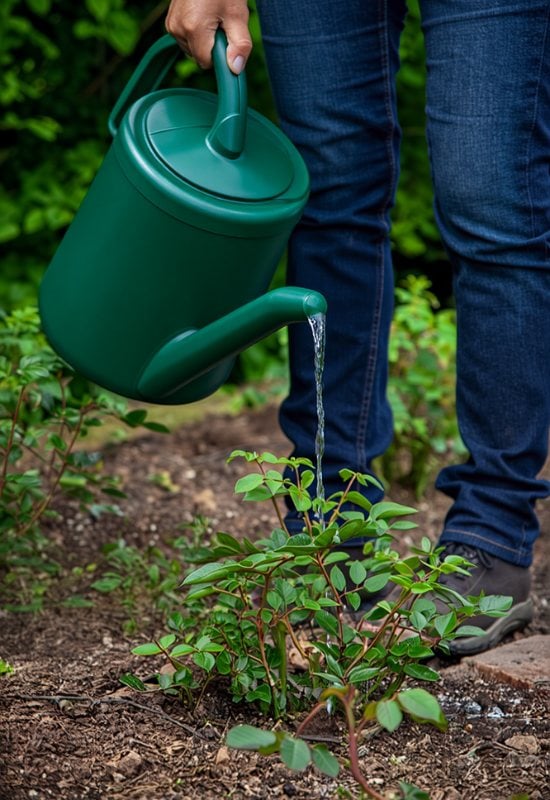
In fall, days are getting shorter, the weather wetter, and, on top of this, your roses will need less water, because their metabolism is slowing down, getting ready to rest in winter. A big mistake beginners make is to keep watering them as if it was summer.
True, rose shrubs need constant watering during the hot season, also to keep fresh, but now they don’t, and if you keep irrigating them as usual, their roots can suffer, even from rot. So, reduce watering them as the season progresses.
Of course, don’t water them if it rains, and always check that the top 2 inches (5.0 cm) of soil are dry before taking out your watering can.
When winter comes, you will keep watering your rose shrubs, don’t let the soil go fully dry, but only irrigate when the top soil has dried up, and never water roses when the ground freezes (it has frozen, or it is about to).
2: Deadheading Spent Blooms on Your Rose Shrubs
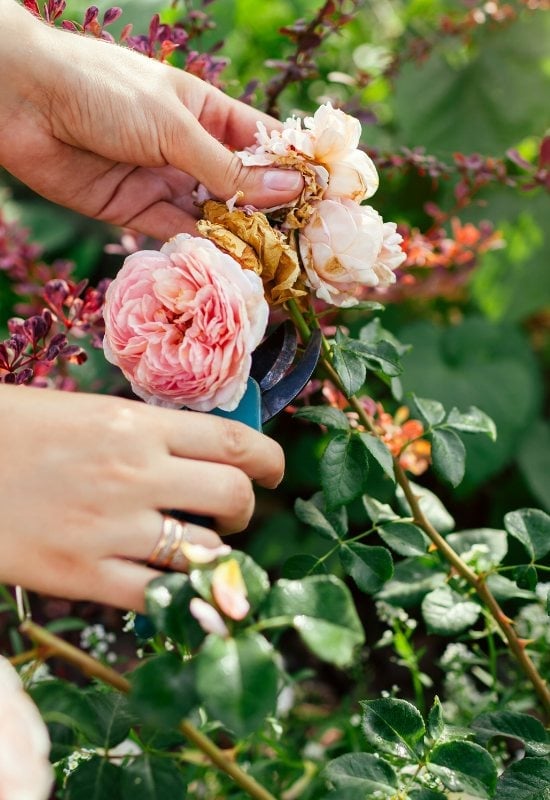
Keep deadheading spent blooms till you get to their final flowering blush. You don’t want them to invest energy on fruiting, as you want more and more flowers. However, when fall comes, you have a choice…
You can leave the last spent blossoms on, so they produce hips, which will last well into the cold season, giving color to your garden (and they are delicious and super nutritious, for your family and little birds.
However, I suggest you keep deadheading spent blooms on weak shrubs till they have none left; they will need energy to develop their roots late in the season and face winter. So, with young, sick shrubs or delicate cultivars, I suggest you take them all off.
3: Stop Fertilizing Your Rose Shrubs in Fall!

One of the mistakes we make with roses is that we love them too much, so we feed them too much, or too long! Stop fertilizing your shrubs 6 to 8 weeks before the first day of frost is expected! They are slowly going into dormancy and they don’t need any “hint” that they should produce new growth.
Instead, your rose shrubs need the old wood to harden off so that it is tough enough to face the cold and harsh days of winter. New growth is tender, and it can suffer, get diseased and die during the cold season.
And absolutely never give roses fast-release liquid fertilizers from late summer on… These promote fast growth!
4: Clean Around Your Rose Shrubs – A Tidy Winter Is a Healthy Winter

Clear all fallen leaves, twigs, petals, any debris etc. from around the base of your rose shrubs. Keep doing this throughout winter, but you must make sure you do this just before you expect the first day of frost.
Fallen leaves and other organic matter can rot and get infected by molds and fungi, and they are a breeding ground for pests – this is exactly what you want to avoid when your rose shrubs are at their weakest.
5: Improve Drainage to Keep Your Rose Shrub’s Roots Dry in Fall and Winter
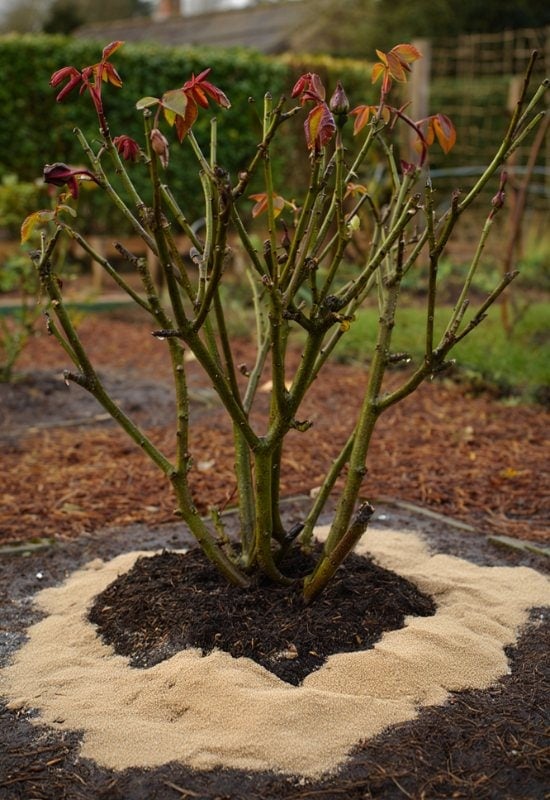
As the season gets wetter and wetter, good drainage becomes essential to keep the roots of your roses healthy. Pockets of stagnant water can damage them seriously. What’s more, as days get colder and colder, so does water, and then you may get ice. And you want your flowering beauties to have “warm feet” – well, at least not frozen…
So, lay about 2 inches (5.0 cm) of coarse sand all around the base of your rose shrub, reaching at least as far as the outermost branches. Add more if your soil has bad drainage, and use gypsum if it is clay based.
6: Mulch Around the Base of Your Rose Shrubs

Apply about 3 to 4 inches of mulch (7.5 to 10 cm) around the base of your rose, making sure you reach at least as far as the shrub spread this year, to the very last leaf. This will cover all the roots, but you can go further if you want.
The best mulch for roses is wood bark, followed by wood chips. There are aesthetic reasons for this, but there’s more… They decompose slowly, and they will last intact through the winter season.
I would definitely avoid fast-decomposing mulch, like hay, straw. They break down too soon, and when they do, they withhold water, which you don’t want at the base of your rose shrubs.
7: Fall Pruning Is a “Light Trim” for Rose Shrubs!
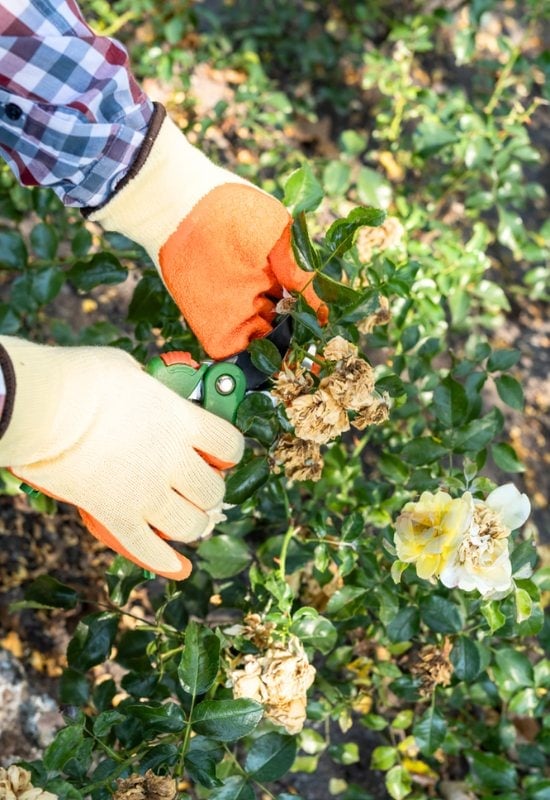
There is some pruning to do with roses in fall, but it is totally different from the main spring task, and you should be very careful: it is only light and for health reasons. You will shape your flowering shrubs in early spring.
So, cut dry, dead and sick branches only, which will not make it through the winter season and they risk spreading diseases. That’s all you need and all you can do. If you prune healthy wood, you will promote new growth, and you don’t want it at this time.
Moreover, try to prune your rose shrubs at least 6 weeks before the first day of frost is expected. The wounds need time to heal before winter fully sets in.
Next, remember to sterilize your blades before you prune every single rose shrub; you don’t want to spread infections from one to another.
Finally, remember the 5 leaflets rule! If you cut a stem before a leaf with 3 leaflets, it will die back to the one with 5 leaflets lower down. So, prune just before a leaf with 5 leaflets.
8: Winter Rose Protection for USDA Zones 7 to 9 (or 10)

Wrap up your rose shrubs warm before the first heavy frost comes in zones 7 to 10. I would suggest you also do it in zone 10 if they are exposed to strong winds.
Roses can easily withstand a light frost, and even heavier ones, they are quite cold hardy, but you don’t want them to suffer and stress over winter. Use burlap or a similar breathable cloth; choose keeping aesthetics in mind too. Wrap the bottom 6 to 12 inches of the shrub (15 to 30 cm); that will keep them warm enough.
Above zone 10, there is no reason to wrap your roses in fall to keep them warm in winter.
9: Winter Rose Protection for USDA Hardiness Zones 6 and Below
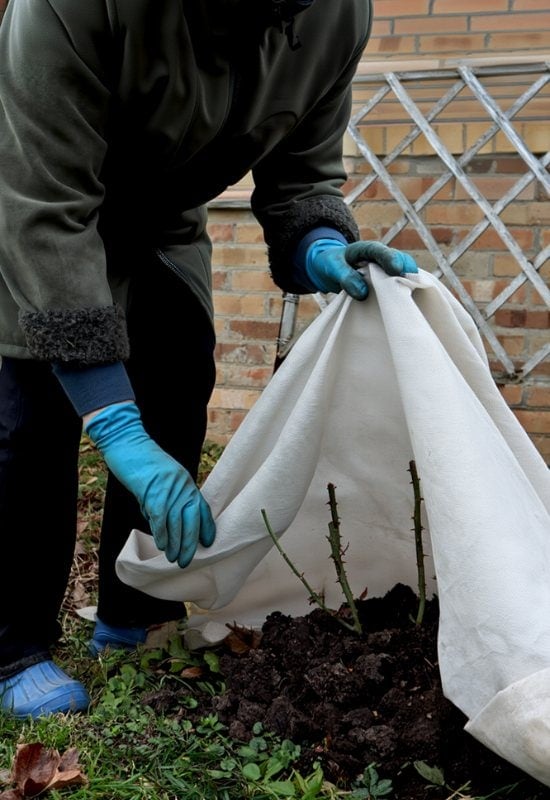
In colder climates, in USDA hardiness zones 6 and below, a simple cloth at the base of your rose shrubs won’t be enough to get them through the cold winter season. You will need to use a rose cone instead.
Make sure you fasten them to the soil with stones or bricks, or they may fly away!
These can be quite expensive though, even a small one (12 inches in diameter, or 30 cm), will set you back about £20, and if you have big shrubs, be prepared to spend about £50! And you will need one that’s larger than the shrub itself; the branches should not touch the covering…
There are alternatives, like plant covers, that wrap up the branches but not the base, or…
You can make your own! A simple transparent plastic sheet, even better if bubble wrap, can keep your rose shrubs warm during winter, but…
- Make sure you pierce lots of holes in the sheet; your roses need to breathe.
- You need to build a frame so that the branches do not touch the sheet (keep about 4 to 6 inches safety distance, or 10 to 15 cm).
- Like with rose cones, use stones or bricks to fasten it to the ground.
Apply these protections soon after the first day of frost, and before a heavy one. When spring comes, remove the (home-made) cones gradually. First around midday, when it’s warmer for a few hours, then for longer and longer periods.
You can add extra warmth with some straw inside the (home-made) cones, especially in very cold regions.
Finally, I suggest you spray your rose shrubs with neem oil before you protect them with the cones, especially home-made ones. This will prevent molds, fungi and other infections. One or two teaspoons for a liter of water will suffice.
Fall Care, Winter Protection and Spring Blossoms for Your Rose Shrubs
Not too hard, thinking about it, isn’t it? You just need to do the right things for your roses and at the right time in fall, and they will be safe in winter, and, as spring comes, they will be ready to grow new shoots, leaves, and then… well, their breathtaking flowers! And, if you want to know more about rose varieties and care, we really have lots of articles on them, including the most fragrant, thornless, etc..

Written By
Amber Noyes
Amber Noyes was born and raised in a suburban California town, San Mateo. She holds a master’s degree in horticulture from the University of California as well as a BS in Biology from the University of San Francisco. With experience working on an organic farm, water conservation research, farmers’ markets, and plant nursery, she understands what makes plants thrive and how we can better understand the connection between microclimate and plant health. When she’s not on the land, Amber loves informing people of new ideas/things related to gardening, especially organic gardening, houseplants, and growing plants in a small space.
